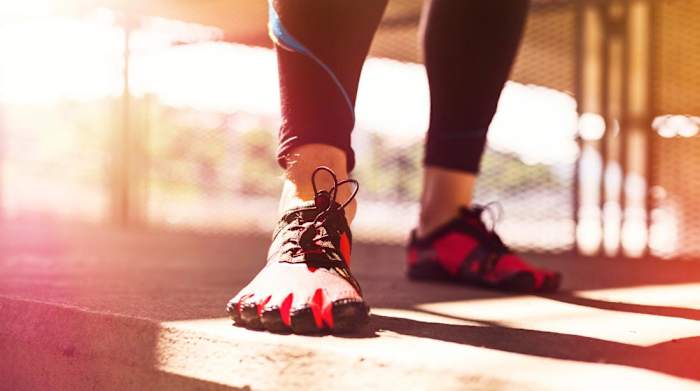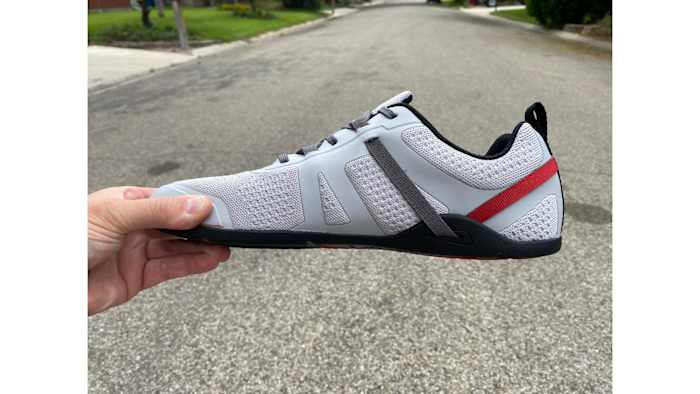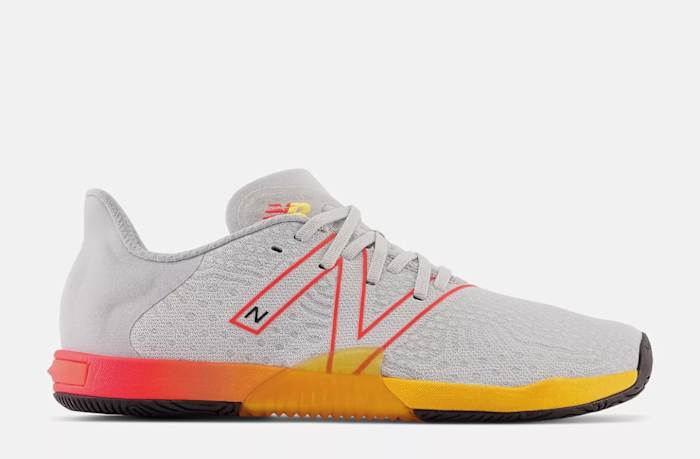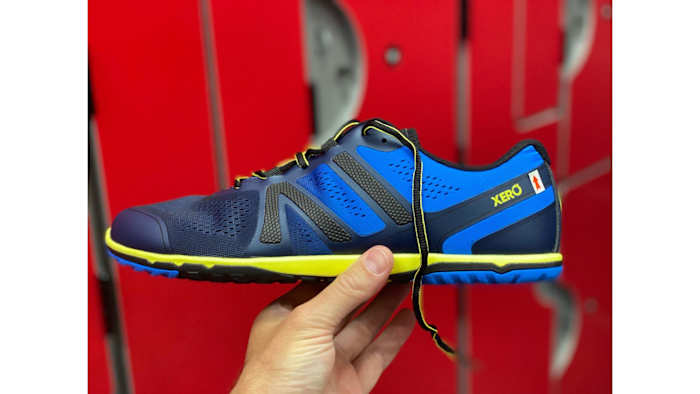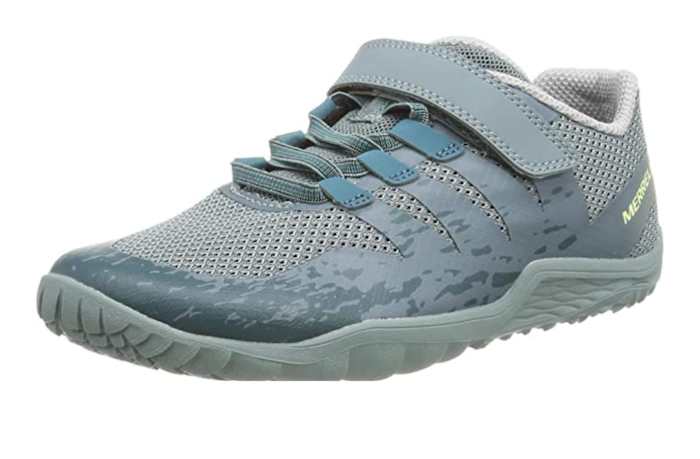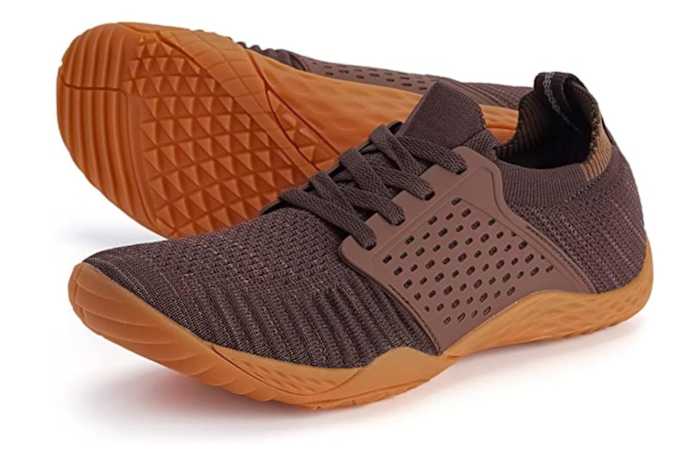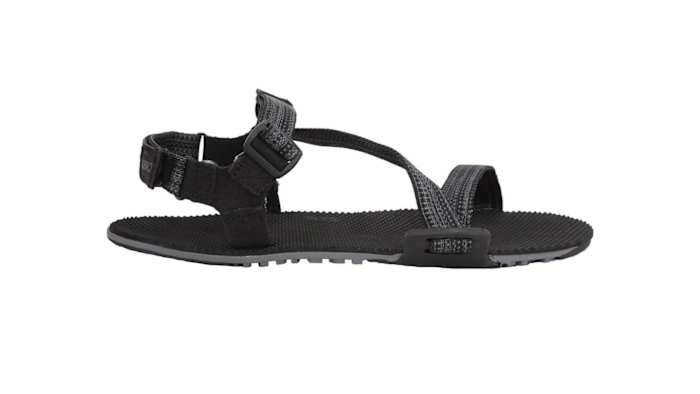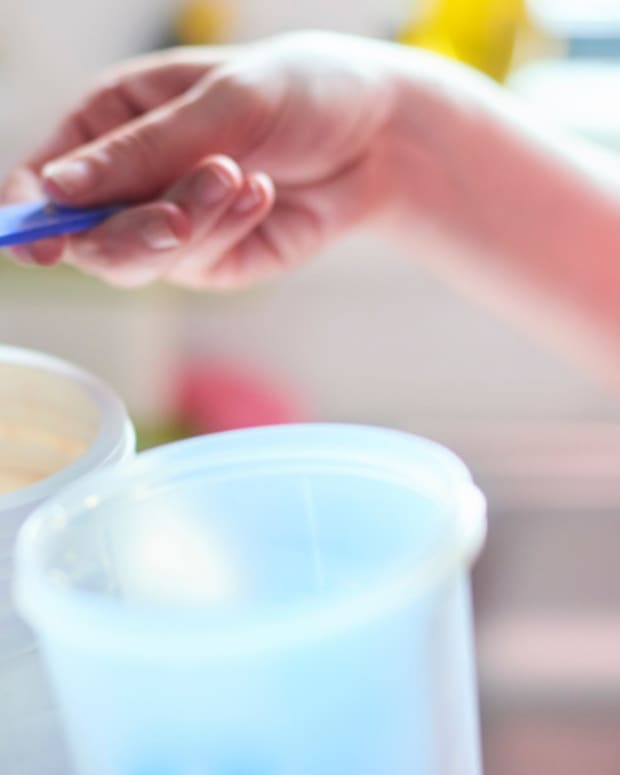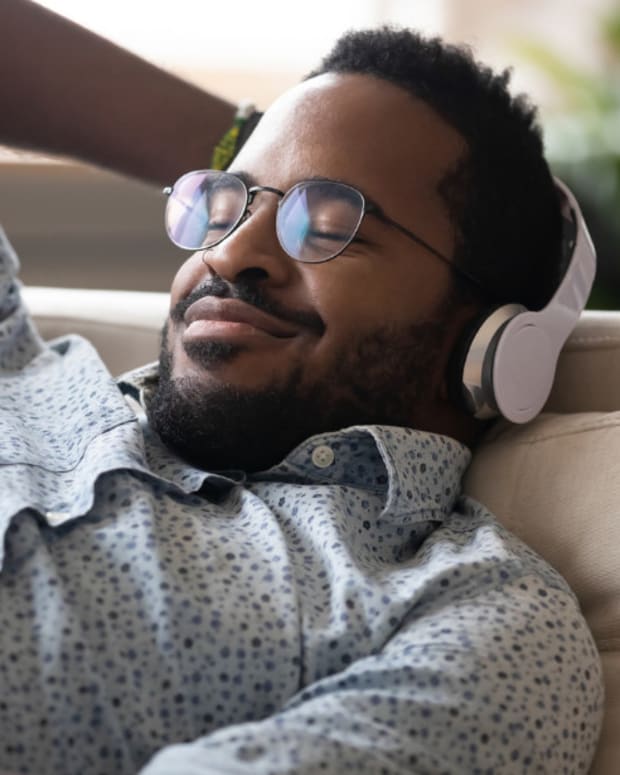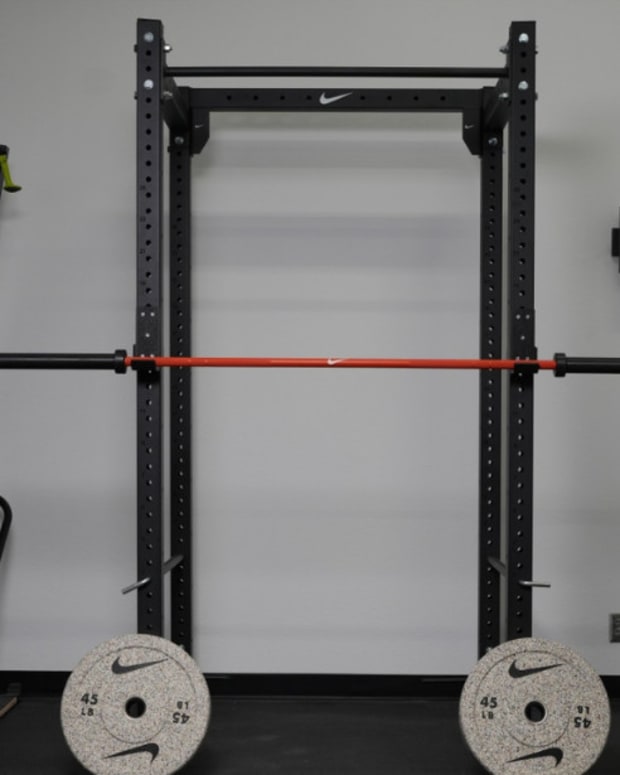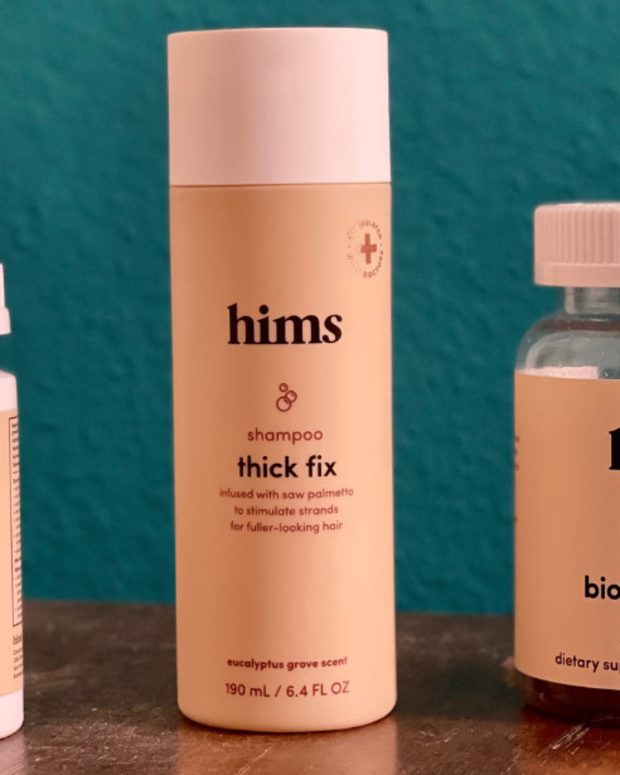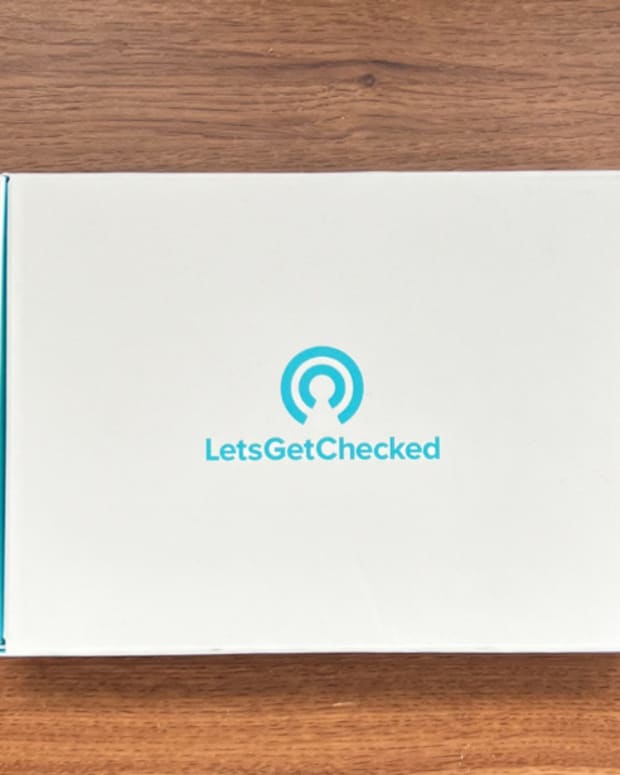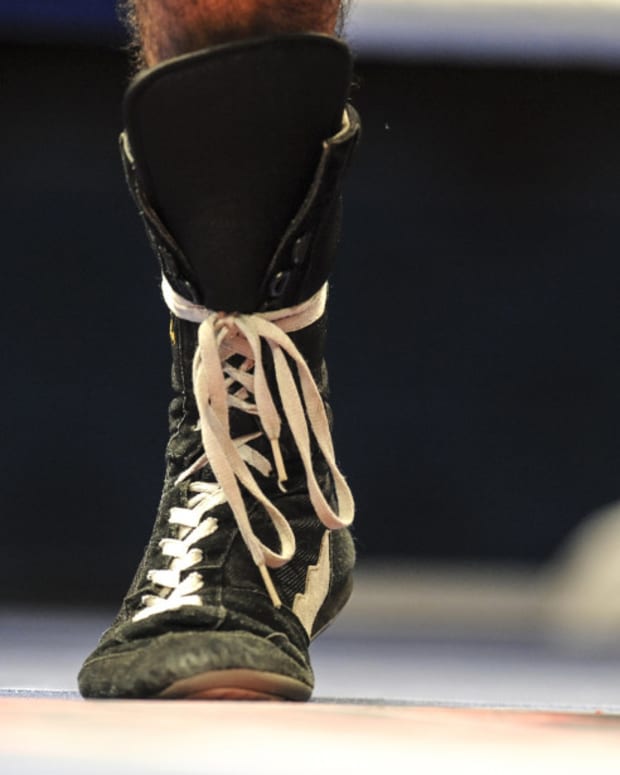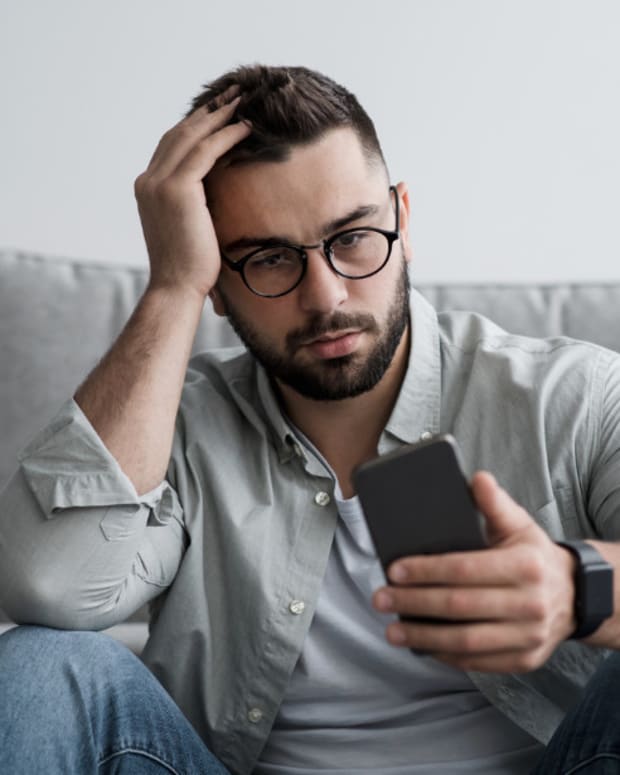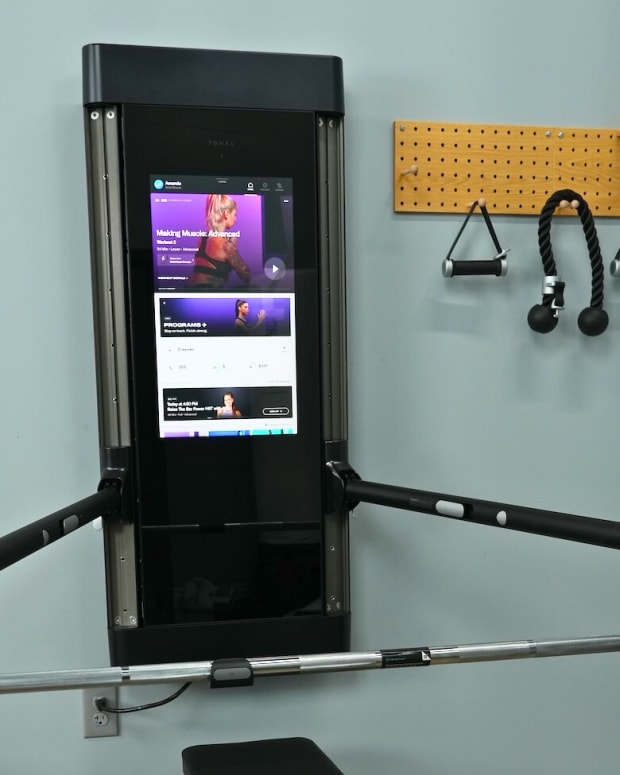The products featured in this article have been independently reviewed. When you buy something through the retail links on this page, we may earn commission at no cost to you, the reader. Sports Illustrated editorial staff are not involved in the creation of this content. Learn more here.
While many shoes are designed to be supportive, keeping your feet cushioned and stable during training, barefoot shoes are built with a flexible sole, designed to twist, bend and move with the natural movement of your foot. You can simulate the feeling of moving around barefoot without having to expose your foot.
Barefoot shoes can help train the muscles in your feet and legs, making your body stronger and less prone to injury. Runners, hikers and exercise enthusiasts alike often like barefoot shoes for that reason.
There are seemingly countless brands on the market in 2024, and choosing the right pair can be difficult. In this guide, we’ll share our top picks for the best barefoot shoes for any type of training goal.
Our Picks for the Best Barefoot Shoes of 2024:
- Best Barefoot Running Shoes: Xero Prio Neo
- Best Barefoot Training Shoes: New Balance Minimus TR
- Best Barefoot Walking Shoes: Xero HFS II
- Best Barefoot Hiking Shoes: Vibram FiveFingers V-Trail
- Best Barefoot Shoes for Kids: Merrell Child Trail Glove 5
- Best Barefoot Casual Shoes: Whitin Men’s Barefoot Shoe
- Best Barefoot Sandals: Xero Naboso Trail Sport Sandal
Best Barefoot Running Shoe: Xero Prio Neo
Key Features:
- Price: $99.99
- Best for: Running
- Drop: Zero millimeters
- Weight: 8.7 ounces (men’s 9)
The Xero shoes are one of the best barefoot shoes on the market, especially for runners. You may recognize the brand from Shark Tank.
Everything about the Xero Prio is designed to feel natural, from the wide foot base to the flexible sole. Xero claims its shoes are flexible enough to be rolled up and stuffed in your pocket. The ultra thin sole aims to provide extra traction and grip, while still letting you feel the ground. The thin sole can have some drawbacks, however—it’s worth noting some reviewers on Amazon said feeling every pebble or branch made them uncomfortable.
The Xero Prios are designed to be worn with or without socks, and include a removable insole to make them feel even more natural.
Xero offers a 5,000 mile sole warranty making these shoes durable and long-lasting for extended running sessions. They also come in a wide range of colors, so you’re sure to find a style you like.
Pros:
- Natural feel, long-lasting and affordable
Cons:
- Some reviews mention the shoes fall apart earlier than 5,000 miles
Best Barefoot Training Shoe: New Balance Minimus TR
Key Features:
- Price: $129.99
- Best for: Gym workouts, cross-training
- Drop: Undisclosed
- Weight: 8.1 ounces
If you spend most of your exercise time in the gym, you’ll love the New Balance Minimus TR. They look like standard training shoes, but the soles are thinner and don’t have a heel lift. They include extra traction around the soles, a midsole grip for climbing ropes and a heel clip for wall pushups.
For those who want to train on a stable surface without taking your shoes off, these are a great choice
The New Balance Minimus TR provide a little bit more cushioning than other models, as well as training-specific features to support your workouts, while still featuring a flexible sole. They feel and look like a hybrid of a barefoot shoe, and a Crossfit shoe. If you’ve never worn barefoot shoes, they’re a nice way to test the waters, without having to go for zero cushioning shoes.
Due to the cushioning and extra training features, they may be considered more of a minimalist shoe rather than a pure barefoot shoe. However, they’re fantastic for workout enthusiasts and they’ll still allow the sole to move and bend the way your foot naturally moves.
Pros:
- Comfortable, sleek design with enhancements for functional workouts
Cons:
- They don’t feel quite as natural as true barefoot shoes, like Vibrams
Best Barefoot Walking Shoe: Xero HFS II
Key Features:
- Price: $119.99
- Best for: Any indoor or outdoor workouts and activities
- Drop: Zero millimeters
- Weight: 8.3 ounces (one shoe, men’s size 9)
Xero describes the HFS II as being a deceptively normal-looking shoe: The sole is thick in appearance, but the bottom is far more flexible than your standard shoe, Xero claims. And although Xero is coy about what the HFS stands for, reviewers aren’t shy with their praise of the shoe: Writes one reviewer that the shoe is “so light and comfy,” and another said that after bad experiences with other barefoot shoes, he found that the “quality and comfort are really good” on the HFS IIs.
The design is meant to be slipped into seamlessly, such that Xero claims some users even forget they’re wearing the shoes. Of course you aren’t really embracing the shoeless, Hobbit-inspired lifestyle. Instead, the tire-inspired outsole will keep you protected against the elements on your walks. If you do want extra support or features for running or lifting weights, you may want to choose a different option. However, if you’re looking for a simple zero drop shoe to walk around in daily, these are a great choice.
To make things even better, the shoes are made to last (5,000 miles are covered by the warranty), so they’ll travel many roads before reaching the final destination of a landfill, reducing your impact on our planet.
Pros:
- Lightweight design that offers natural movement
Cons:
- They’re a little pricey, and don’t have extra features for training or running
Best Barefoot Hiking Shoe: Vibram FiveFingers V-Trail
Key Features:
- Price: $134.95
- Best for: Hiking, outdoor use
- Drop: Zero millimeters
- Weight: Two pounds
Vibram FiveFingers are one of the most iconic shoe brands on the market with their individual-toe design that looks like a glove for your feet. Unlike standard shoes, each toe has its own little area in the shoe, making these shoes look like actual feet.
The V-Trails are specifically designed for hiking, with water-repellant upper materials and extra mesh in the outsole to provide protection against rocks, sticks or other sharp objects you may accidentally step on.
Related Post: The Best Water Shoes for Your Summer Adventures
The soles feature Vibram’s MegaGrip Compound, a material specifically designed to provide extra traction and safety on both wet and dry surfaces.. If you’re regularly exploring the outdoors, these barefoot shoes aim to to keep your feet safe and protected, while allowing natural movement.
Pros:
- Water-repellent with traction designed for slippery trails
Cons:
- Several reviewers experienced painful rubbing from the new seam along the big toe.
Best Barefoot Training Shoes for Kids: Merrell Child Trail Glove 5
Key Features:
- Price: $55
- Best for: Children who want to play outdoors
- Drop: Zero millimeters
- Weight: 5.1 ounces
If you want to get the whole family wearing barefoot shoes, the Merrell Child Trail Glove is the great option for your kids
They’re designed for hiking, so they have all of the traction and grip you’d expect from hiking shoes. However they can be worn and enjoyed anywhere, with a breathable upper material to keep your child’s feet comfortable. One potential negative: Some reviewers on Amazon said their children loved the shoes for activities such as Ninja Warrior class, but they didn’t hold up to wear and tear.
The shoe features an alternative toggle closure, so your kids can easily take the shoes on and off without worrying about tying their laces each time. The flexible sole features an enhanced grip, designed to keep your child safe wherever they explore.
Pros:
- Natural feel that functions like standard barefoot shoes
- Simple, child-friendly closure
Cons:
- They aren’t supportive enough for regular sports, so you’ll want to make sure your child has different shoes if they play any team sports
Best Barefoot Casual Shoe: Whitin Barefoot Shoe
Key Features:
- Price: $49.99
- Best for: Casual wear, hiking
- Drop: Zero millimeters
- Weight: 13.1oz
The Whitin Barefoot shoe is the perfect choice for anyone who wants a casual shoe to wear throughout the day that won’t necessarily draw attention the way Vibrams might.
The Whitin Barefoot shoe features a simple, minimalist design with a flexible zero-drop sole. The thin sole allows you to feel the ground beneath your feet, whether you’re hiking the trails or walking through your local park.
They’re very affordable, stylish and a practical choice to wear day to day. These are a great option for beginners who want to try barefoot shoes on a budget.
Some of the negative reviews mention the Whitin Barefoot shoes are not quite as durable as other options. However, they’re less than half the price of some other barefoot shoes on the market, so the cost may balance out over time even if you need to replace them more often.
Pros:
- Extremely affordable, and minimalist style that won’t draw too much attention
Cons:
- Less protection than some other barefoot shoes
- Less durable than other options
Best Barefoot Sandals: Xero Naboso Trail Sport Sandal
Key Features:
- Price: $109.99
- Best for: Running, walking, hiking, those who want their foot to breathe
- Drop: Zero millimeters
- Weight: 5.4 ounces per sandal (men’s size 9)
If you want your feet to be exposed without actually walking around barefoot, the Xero Naboso Trail Sport Sandals are for you.
These black, minimalist sandals are designed to allow the top of your foot to breathe while providing a layer of traction and protection for the bottom of your foot. The top strap ensures that your foot stays in place, whether you’re hiking, running or going on a long walk.
One special element of these sandals is the insole, which uses Xero’s proprietary “Naboso” performance tech. Xero claims that the material stimulates small nerve proprioceptors to improve posture and movement.
The sandals are also made with 100 percent vegan materials and aim to be versatile enough for nearly any use, from hiking to everyday walking. If you want a minimalist sole with the body of a sandal, this is the shoe for you.
Pros:
- Open-top design keeps your feet securely in place while leaving the top exposed
Cons:
- Some reviews say the sandals take a long time to adjust to
What Is a Barefoot Shoe?
Many people enjoy the freedom of walking on their bare feet, but can’t walk around in public places without shoes. This is where barefoot shoes come into play.
Barefoot shoes are designed with very little padding and a flexible sole, making them the ultimate minimalist shoe. They’re designed to protect the bottom of your feet, while still allowing your foot to grip the ground naturally.
Unlike shoes with a supportive sole, barefoot shoes provide protection and grip, but not support. Your foot will provide its own support. Think of barefoot shoes like gloves or mittens for your feet.
Benefits of Wearing Barefoot Shoes
Many people swear by training in their bare feet. Barefoot shoes allow them to do so without cutting, burning, or damaging the bottom of their feet.
For runners, barefoot running can be a challenge and adjustment initially, but many prefer it compared to highly supportive running shoes. By training your body to run or walk without supportive shoes, you’ll naturally strengthen the supportive muscles in your feet, which can weaken if you’re always wearing running shoes.
Weightlifters often like barefoot shoes because they provide a flat, stable surface, unlike a squishy running shoe. When performing a movement like a squat, deadlift, or Olympic lift, you want a stable base, and cushioning in running shoes allows your foot to wiggle around too much.
As most gyms frown upon lifting in your socks, barefoot shoes are a nice way to keep your feet covered while still feeling the ground directly under your feet.
Drawbacks of Wearing Barefoot Shoes
If you’re new to barefoot training, barefoot shoes may initially cause some pain and soreness. After all, learning how to exercise without supportive shoes is new to your body, so you need time to break them in. The bottoms of your feet, and your ankle and calf muscles may feel a bit strained in the beginning.
Because barefoot shoes don’t offer any arch support, the risk of injury is slightly higher. Some find it easier to roll their ankle if they lose their footing, or feel pain if you step on something sharp where a regular shoe offers more protection.
With zero heel-to-toe drop, you may also find that lifting weights feels different, especially if you’re used to training with a raised heel.
If you’re hiking in the mountains or running on rocky trails, the sharp rocks and sticks may be a bit painful, so be careful where you step. Those with flat feet may also prefer a shoe that’s a bit more supportive.
What to Look for in a Barefoot Shoe
Cushioning
Most barefoot shoes provide minimal cushioning, though some do have a small layer under your foot. The shoe will still move and bend just like your normal foot would, but it may be slightly more padded, like wearing a thick sock.
You may also be able to find some models that offer a little bit of padding around the top of your foot and ankle area.
Support
By definition, barefoot shoes are designed to provide as little support as possible. The bottoms of the shoes will fold, bend and twist, allowing your foot to freely move with each step.
If you need support to avoid pain when running, you’ll likely want to avoid barefoot shoes, as they are designed to provide traction and protection, rather than support.
Intended use
Barefoot shoes are intended to replace your regular shoes during any type of activity, whether you’re hiking, running, lifting weights or strolling around your neighborhood,
It’s best to only use barefoot shoes during daily activities or exercise in the gym, but they’re not supportive enough to be worn during competitive sports, or activities that require a lot of starting and stopping. Athletic shoes like basketball shoes are specifically designed to provide traction and extra support for safety, so if you’re going to be changing directions frequently, or sprinting, you may want to skip the barefoot shoes.
Cost
The cost ranges from affordable, below $50, to quite expensive, over $150. Reviewers say even the lower-cost shoes are well-made and won’t necessarily feel like cheap shoes.
Barefoot Shoes vs. Traditional Sneakers
While many love barefoot shoes, they’re not for everyone.
Those who need more arch support may prefer shoes designed for flat feet. If you’re a triathlete and need support over a longer period of time, you may prefer a regular running shoe that offers more support and cushioning. Otherwise, your feet may fatigue before the longer runs are over.
If you’re used to a traditional running shoe, it may take a while to get used to the natural movement of barefoot shoes.
If you’re simply walking around your neighborhood, you’ll be able to transition from regular walking shoes to barefoot shoes fairly quickly.
Those with plantar fasciitis may need more support, or those with a history of any foot injury. If you’ve had issues with your feet and ankles in the past, you may want to consult with your physical therapist or podiatrist before switching to barefoot shoes.
Barefoot Shoe FAQs
Do minimalist shoes strengthen your feet?
Yes, there’s no support for the arch of your foot, so the muscles in your feet need to work harder to support your body.
Are minimalist shoes the same as barefoot shoes?
While they are similar, they’re not always the same. Both styles are designed to have zero drop and provide a natural movement feel, minimalist shoes may offer more cushioning than traditional barefoot shoes.
Should I size up for barefoot shoes?
Each brand varies in its recommendations. Most of the time you’ll stick with your regular shoe size. While the top of the shoes are often similar to regular training shoes, the bottom soles are more thin and flexible.
Do barefoot shoes cause problems?
They can, especially in the beginning. If you’re not used to training without supportive shoes, your feet and ankles may be sore as they adjust. The thinner sole also offers less protection, so if you step on sharp or uneven surfaces, you may feel it poke your foot a bit more.
What should I expect when I transition to barefoot shoes?
Expect an initial transition period as your body adjusts, especially if you’re doing any sort of running and hiking. If you’ve ever run around your house or yard without shoes, you know the feeling is completely different than when wearing running shoes. Barefoot shoes will feel the same way, so be sure to ease them in on shorter walks or runs until your body adapts.
Final Thoughts
Barefoot shoes are a great way to strengthen your feet and legs, and enjoy the feeling of the ground below your feet, whether you’re climbing a mountain or running a race.
Pick the pair that best suits your training needs, and your feet will thank you!
Prices are accurate and items in stock as of publish time.
